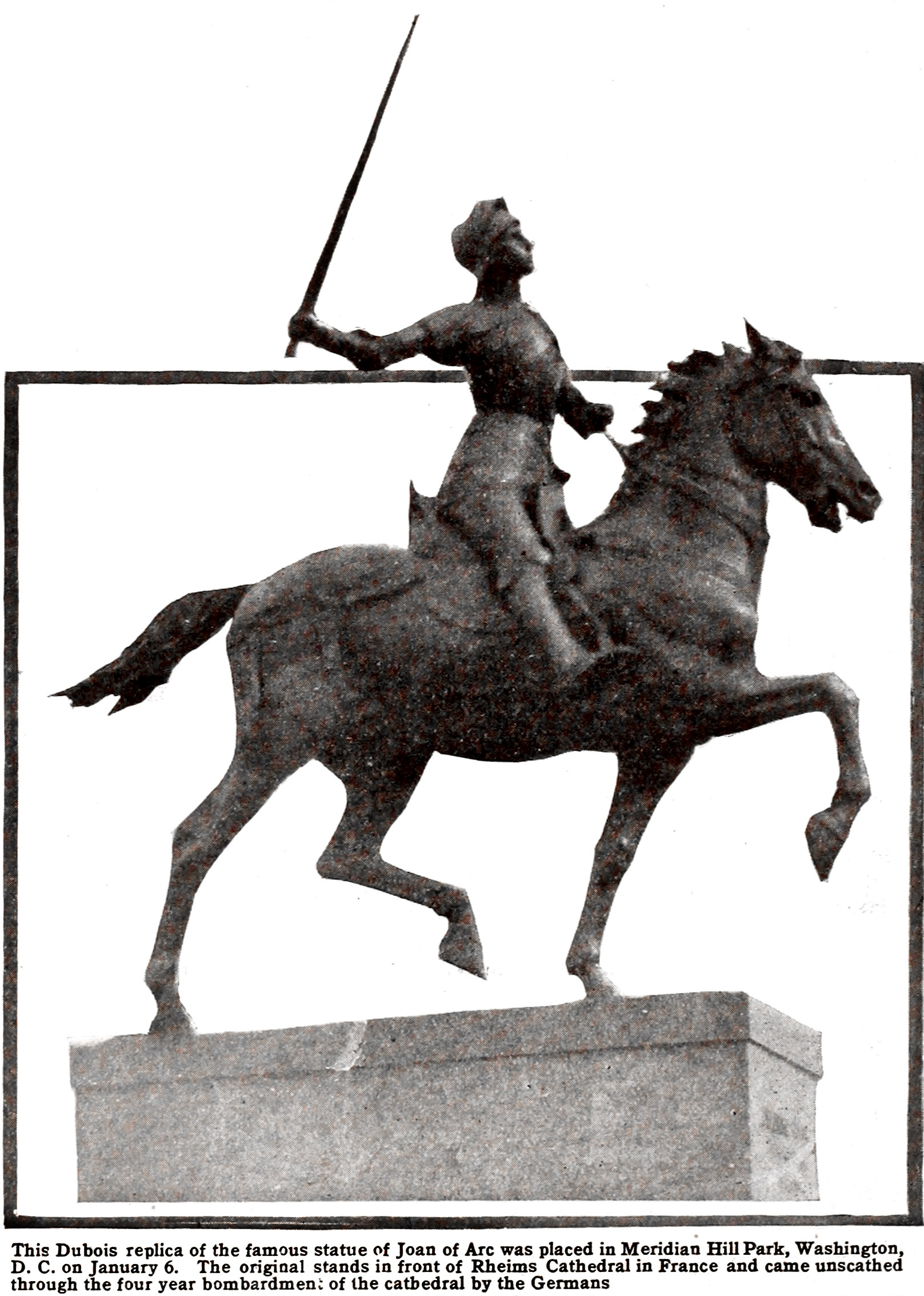
Traditions Broken at Unveiling of Statue of Joan of Arc
Beautiful Ceremony Focuses Attention of Two Continents on Capitol City and the Woman it Honors

ON January 6 last, in Meridian Hill Park, Washington, D. C, the statue of Joan of Arc was unveiled. It is a replica of the masterpiece of Paul Dubois, the celebrated French sculptor, which stands before the Rheims Cathedral and which came unscathed through the fire of German guns for more than four years.
Le Lyceum Societe des Femmes de France a New York, through the untiring efforts of its distinguished founder and president, Mme. Carlo Polifeme, was instrumental in bringing into being this new mark of friendship between France and the United States.
By his presence President Harding honored the ceremonies incident to the unveiling, and Mrs. Harding and Mme. Jusserand, wife of the French Ambassador, drew the silken cords which released the large French and American flags concealing the statue, while a salute of 17 guns was fired by a battery of U. S. artillery from Fort Myer. This salute is one accorded only to field marshals, but through a special Act of Congress it was given on this occasion for the first time in history to a woman.
The church bells of the city lent their voices in ringing harmony while the Marseillaise and the Star Spangled Banner were being played. American soldiers and sailors formed a guard of honor, the French and American colors fluttered in the breeze on all sides, and standard bearers carrying the Joan of Arc and Cross of Lorraine banners, were grouped about the statue, a brilliant picture in the afternoon sunshine of a perfect day.
Mme. Carlo Polifeme presented the statue, and said in part: “For liberty and peace Lafayette brought you his sword; for peace and justice Jeanne D'Arc brings you the inspiration of her undaunted courage and love of country.”
The Honorable John Weeks, secretary of war, accepted the statue for the Government and the City of Washington. He compared the deeds of Joan of Arc with those of Washington and Lincoln and called the event another evidence of the lasting friendship between the peoples of the two great republics.
Dedicated to the women of America by the women of France, in a spirit of love and understanding, the statue was accepted in their behalf by Mrs. George Maynard Minor president-general of the Daughters of the American Revolution. Then the French Ambassador, Mr. Jules Jusserand, told the fascinating history of Jeanne D'Arc, one day a peasant girl and the next the liberator of France, greater than generals in her simple faith, her career unique in the history of the world.
A special car attached to the train leaving New York via the Baltimore and Ohio Railroad, at 2.25 p. m. on January 5, conveyed the delegation of Le Lyceum to Washington. The trip was a most enjoyable one. The Baltimore and Ohio had also transported the statue of Joan of Arc, and Le Lyceum was highly gratified at the special care given it.
While in Washington Le Lyceum paid an official visit to the Lafayette Statue and there placed a wreath. They also went to Mt. Vernon and laid a wreath on the tomb of Washington. They paid their respects at the Lincoln Memorial and at the tomb of the Unknown Soldier.